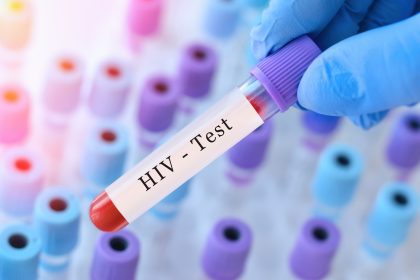In our rapidly evolving society, fostering discussions about sexual health has become imperative for holistic well-being. Among the multifaceted facets of this discourse lies a critical focal point: the interconnection between the number of sexual partners and the increased vulnerability to sexually transmitted infections (STIs). This nexus serves as a pivotal area that demands unwavering attention and understanding.
At the heart of this correlation lies the undeniable reality: the more sexual partners an individual engages with, the greater their susceptibility to contracting STIs. Acknowledging and comprehending this intricate relationship is fundamental in empowering individuals to make informed decisions and adopt proactive measures to safeguard their sexual health.
In this modern era where relationships take diverse forms and societal norms evolve, understanding the repercussions of multiple sexual partners on personal health is paramount. It’s within this context that exploring the intersection of sexual behavior and its potential health implications becomes not just relevant but indispensable.
By delving into this connection, we aim to illuminate the nuances, dispel misconceptions and provide a comprehensive understanding of how the number of sexual partners can significantly impact an individual’s vulnerability to STIs. Through informed knowledge and proactive steps, individuals can navigate their sexual health landscape with confidence and responsibility.
Why Does the Number of Sex Partners Matter?
The number of sexual partners an individual engages with significantly impacts their risk of contracting STIs. When multiple partners are involved, the likelihood of exposure to infections rises exponentially. Each new partner introduces a potential risk factor, increasing the complexity of sexual health management.
The Statistics Speak: Risk Amplification
Research consistently demonstrates a direct relationship between the number of sex partners and the probability of contracting STIs. Studies conducted by reputable health organizations have shown that individuals with multiple partners are at a substantially higher risk of acquiring infections compared to those in monogamous relationships.
Understanding the Mechanism
The mechanisms behind this correlation are multifaceted. With multiple partners, the chances of encountering an infected individual naturally increase. Additionally, certain STIs might not exhibit immediate symptoms, leading to unknowing transmission from one partner to another.
Education and Awareness: Key Preventative Measures
Education serves as the foremost weapon against the spread of STIs in a scenario involving multiple partners. Awareness campaigns, easily accessible information and open dialogues are essential in empowering individuals to make informed choices. Encouraging regular STI testing and the use of protection, such as condoms, significantly reduces the risk of transmission.
The Importance of Communication
Open and honest communication between sexual partners is paramount. Discussing sexual histories, previous infections and the importance of protection fosters an environment of trust and responsibility. This proactive approach aids in mutual understanding and the shared commitment to maintaining sexual health.
Seeking Medical Advice: A Prudent Step
In cases where multiple partners are involved, seeking guidance from health care professionals becomes crucial. Regular screenings for STIs can help detect infections early, facilitating timely treatment and preventing further spread.
Empowerment Through Safe Practices
Empowering individuals with the knowledge and tools to make responsible decisions regarding their sexual health is pivotal. Encouraging safer practices, emphasizing the importance of regular screenings and advocating for comprehensive sex education collectively contribute to a healthier and more informed society.
Undoubtedly, the undeniable correlation between multiple sexual partners and the heightened risk of STI transmission underscores the urgency for collective action. Heightened awareness, comprehensive education and transparent communication form the bedrock of defense against this risk. Through proactive measures and informed decision-making, individuals can assume responsibility for their sexual well-being, irrespective of relationship dynamics.
It’s imperative to cultivate a culture that champions responsible sexual practices and prioritizes health-conscious choices. Empowerment lies in knowledge, fostering open discussions and embracing conscientious actions. Taking charge of one’s sexual health initiates a ripple effect, fostering healthier communities by reducing the prevalence of STIs.
Remember, the pathway to safeguarding sexual health starts with informed choices, open dialogue and a commitment to responsible behavior. Let us collectively strive towards a future where informed decisions become the cornerstone of sexual well-being, ensuring healthier and more empowered societies.
This story was created using AI technology.
















